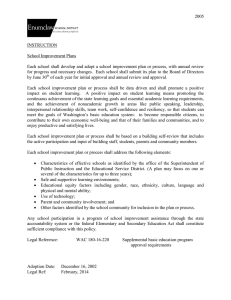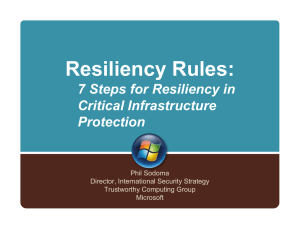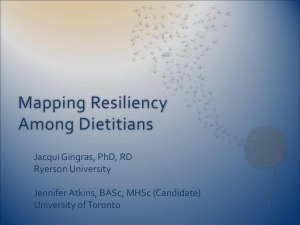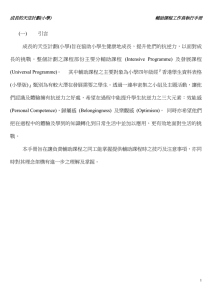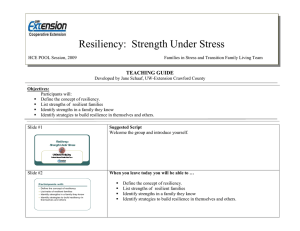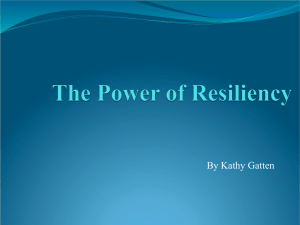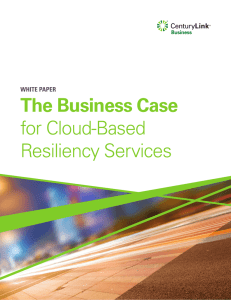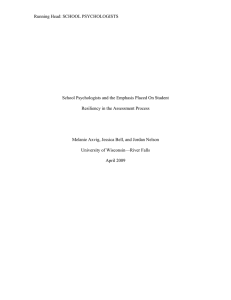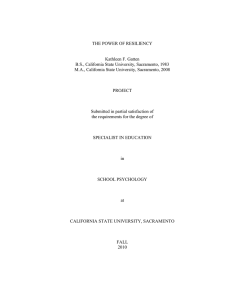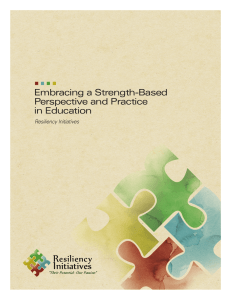PSYCHOLOGY MONTH 2016 Department of Psychology, Dufferin-Peel CDSB
advertisement
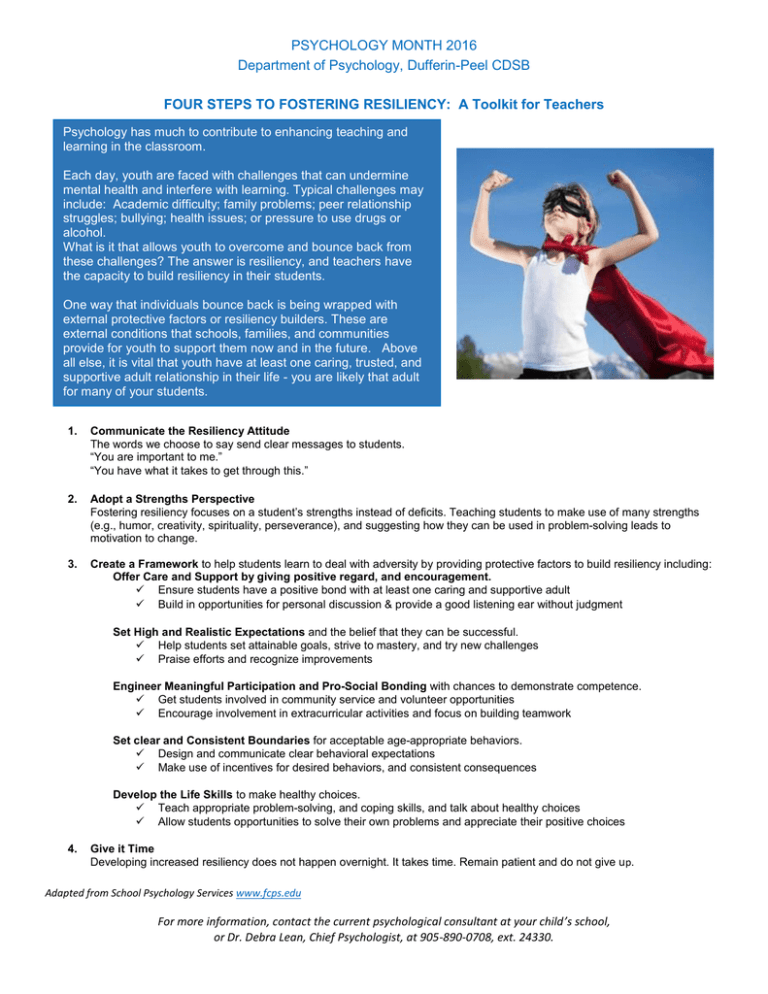
PSYCHOLOGY MONTH 2016 Department of Psychology, Dufferin-Peel CDSB FOUR STEPS TO FOSTERING RESILIENCY: A Toolkit for Teachers Psychology has much to contribute to enhancing teaching and learning in the classroom. Each day, youth are faced with challenges that can undermine mental health and interfere with learning. Typical challenges may include: Academic difficulty; family problems; peer relationship struggles; bullying; health issues; or pressure to use drugs or alcohol. What is it that allows youth to overcome and bounce back from these challenges? The answer is resiliency, and teachers have the capacity to build resiliency in their students. One way that individuals bounce back is being wrapped with external protective factors or resiliency builders. These are external conditions that schools, families, and communities provide for youth to support them now and in the future. Above all else, it is vital that youth have at least one caring, trusted, and supportive adult relationship in their life - you are likely that adult for many of your students. 1. Communicate the Resiliency Attitude The words we choose to say send clear messages to students. “You are important to me.” “You have what it takes to get through this.” 2. Adopt a Strengths Perspective Fostering resiliency focuses on a student’s strengths instead of deficits. Teaching students to make use of many strengths (e.g., humor, creativity, spirituality, perseverance), and suggesting how they can be used in problem-solving leads to motivation to change. 3. Create a Framework to help students learn to deal with adversity by providing protective factors to build resiliency including: Offer Care and Support by giving positive regard, and encouragement. Ensure students have a positive bond with at least one caring and supportive adult Build in opportunities for personal discussion & provide a good listening ear without judgment Set High and Realistic Expectations and the belief that they can be successful. Help students set attainable goals, strive to mastery, and try new challenges Praise efforts and recognize improvements Engineer Meaningful Participation and Pro-Social Bonding with chances to demonstrate competence. Get students involved in community service and volunteer opportunities Encourage involvement in extracurricular activities and focus on building teamwork Set clear and Consistent Boundaries for acceptable age-appropriate behaviors. Design and communicate clear behavioral expectations Make use of incentives for desired behaviors, and consistent consequences Develop the Life Skills to make healthy choices. Teach appropriate problem-solving, and coping skills, and talk about healthy choices Allow students opportunities to solve their own problems and appreciate their positive choices 4. Give it Time Developing increased resiliency does not happen overnight. It takes time. Remain patient and do not give up. Adapted from School Psychology Services www.fcps.edu For more information, contact the current psychological consultant at your child’s school, or Dr. Debra Lean, Chief Psychologist, at 905-890-0708, ext. 24330.

